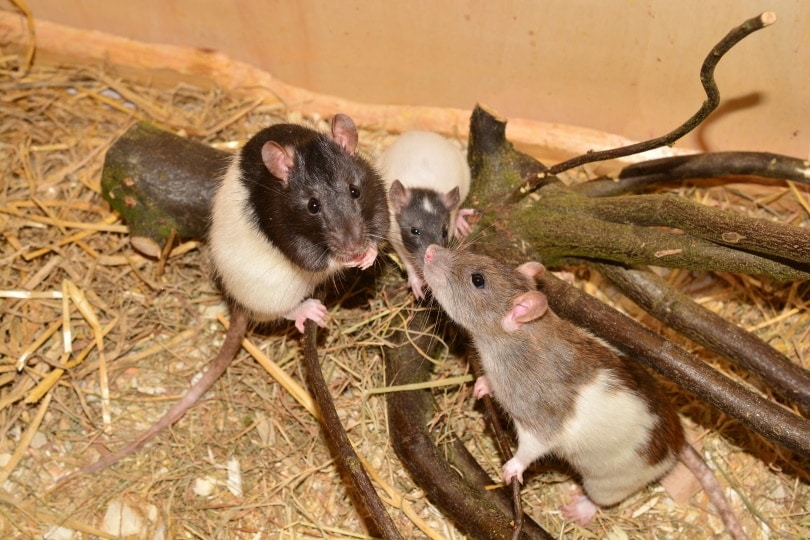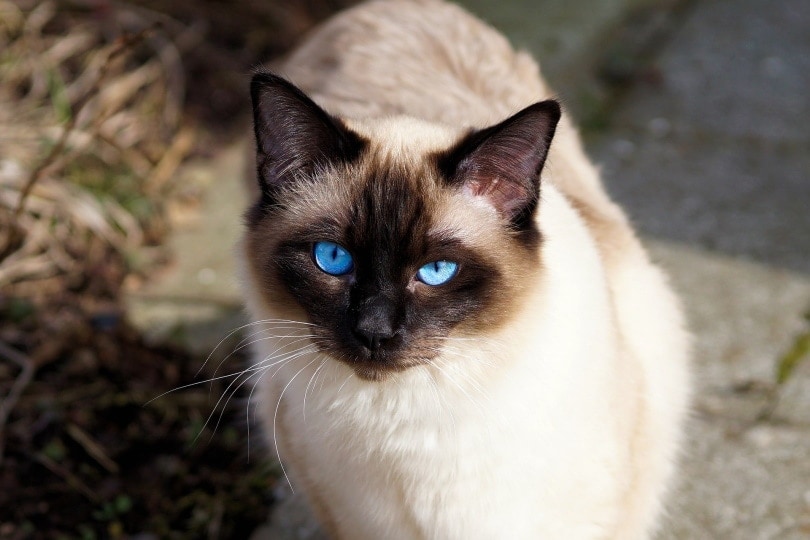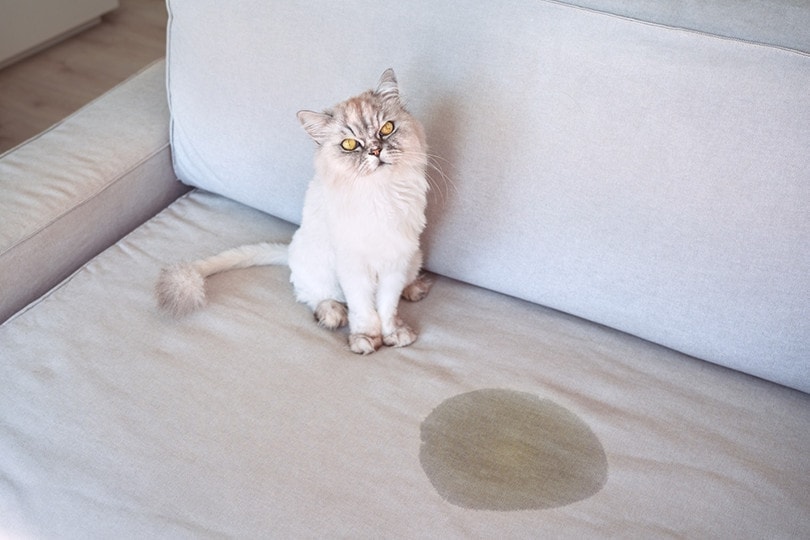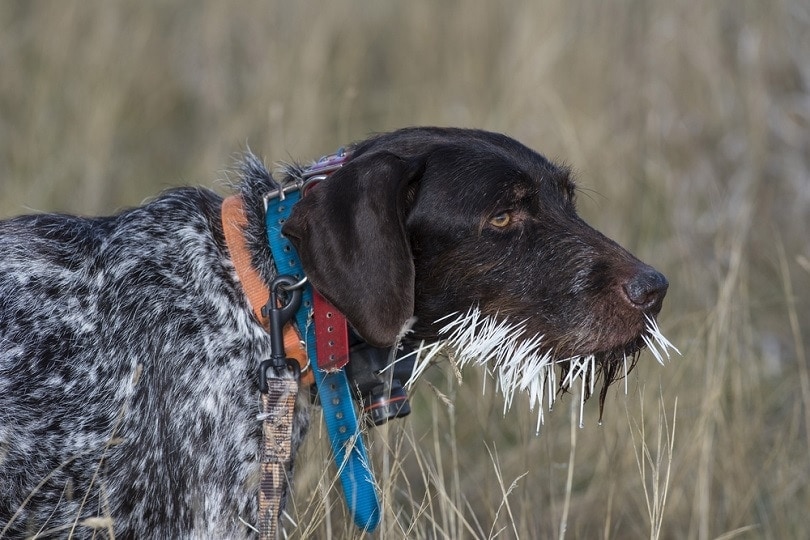How Many Eyelids Do Cats Have? Vet Approved Facts (With Infographic)

Updated on
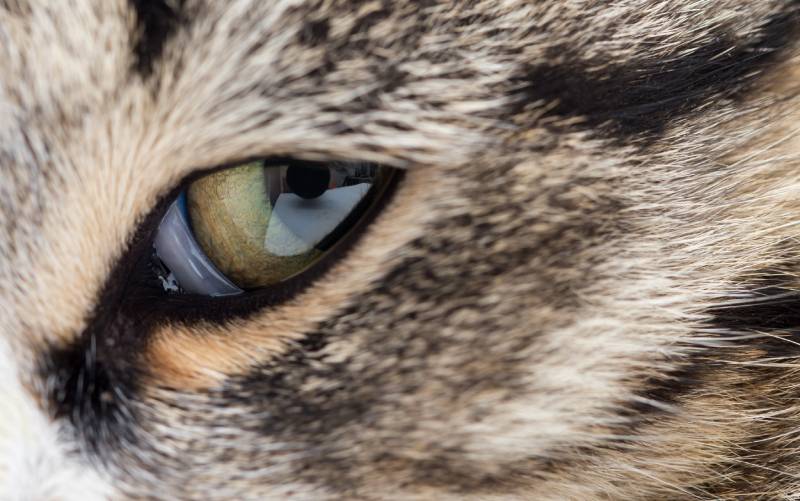
Click to Skip Ahead
Most of us are used to a resting kitty’s sleepy or indifferent blinking, often subconsciously thinking their eyes work like ours. That’s why it can be quite a surprise when we spy a cat’s third eyelid in action! Although the top and bottom ones do most of the heavy lifting, cats have three eyelids to improve the protection around their valuable peepers in their natural environment.
We typically don’t see this conjunctival fold because it stays tucked in the medial canthus inside the eye. It consists of elastic tissue and includes a lacrimal gland, called the nictitans gland or third eyelid gland. Like a windshield wiper, the translucent membrane moves diagonally over the eye, allowing the cat to retain some degree of visibility while it’s exposed.
How Many Eyelids Do Cats Have?
Like humans, cats have an upper and lower eyelid. The two blink shut to protect the eye, spread moisture across the cornea, and sweep away debris. Cats also have a light pink third eyelid in the inner corner, underneath the outer eyelids, called the nictitating membrane.
We typically don’t see this conjunctival fold because it stays tucked in the medial canthus inside the eye. It consists of elastic tissue and includes a lacrimal gland, called the nictitans gland or third eyelid gland. Like a windshield wiper, the translucent membrane moves diagonally over the eye, allowing the cat to retain some degree of visibility while it’s exposed.
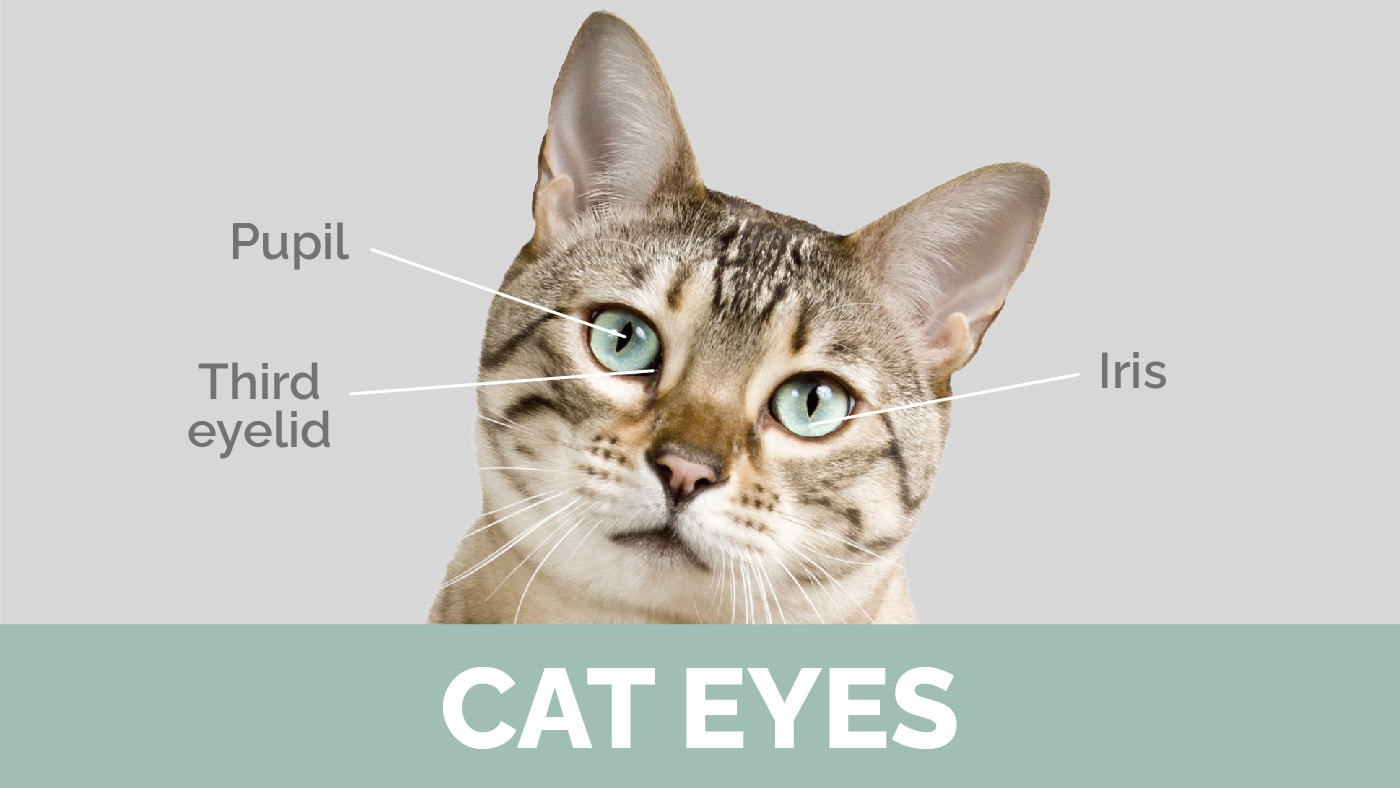
Why Do Cats Have Three Eyelids?
Many animals other than cats have a nictitating membrane, including dogs, birds, amphibians, reptiles, and fish. In the cat, the nictitans gland hidden behind the membrane accounts for 30% of the eye’s tear production, adding moisture to clear debris and microbes while distributing nutrients and antibodies over the eye.
As a predator who travels through thick brush to stalk prey, a cat needs the additional eyelid to protect against debris and trauma. Being bipedal, humans and many other primates evolved past the need for the nictitating membrane. Instead, we have a conjunctival fold called plica semilunaris, which is a vestigial structure where the concealed membrane usually sits.
Should I See My Cat’s Third Eyelid?
The third eyelid typically stays hidden most of the day. Cats have a unique muscle that humans lack called the retractor bulbi muscle. The muscle retracts the eye into the orbit, pulling the nictitating membrane over the eye.
You may spot this while your cat rests, as the muscles draw the eye back pulling the third eyelid out. Some cats can also have a naturally prominent third eyelid, or you may see it if your cat has something in their eye causing them discomfort. When the eye is in pain, the retractor bulbi muscle pulls the eye in the socket and the third eyelid protrudes.
In most instances, a sudden protruding membrane means there’s likely a medical issue at play. If your cat is abnormally extending one or both of their third eyelids, you should immediately contact your vet. The following are a few reasons your cat may have one or both exposed third eyelids.
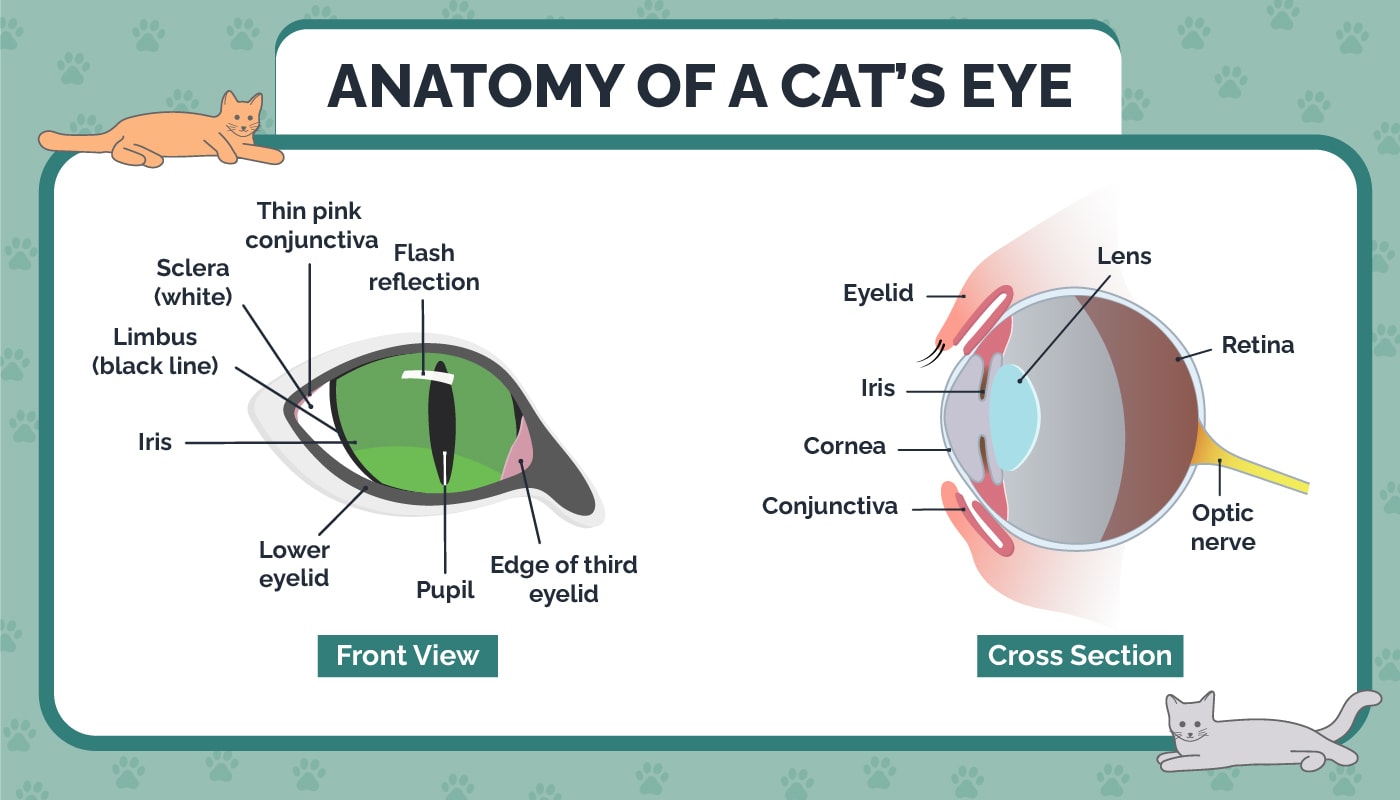
Possible Medical Issues
1. Dehydration or Sudden Weight Loss
Both third eyelids can protrude if your cat is suffering from moderate to severe dehydration or if they have lost a significant amount of weight in a short time. If your cat’s third eyelids are persistently showing it is important to take your kitty for a vet visit to give them a thorough check.
2. Cherry Eye
If you notice a small pink lump where your cat’s third eyelid usually sits, it could be due to a condition called cherry eye. This is basically a prolapse of the third eyelid gland and it is far more common in dogs, but it can also happen in cats.
A bulbous, reddish to pink protrusion emerges from the eye’s inner corner. Cherry eye typically occurs when the gland attachments weaken, causing it to “pop out” and become visible. The exposed gland can become swollen and inflamed, causing discomfort and tearing. Your vet will be able to accurately diagnose and treat the problem, usually with surgery.

3. Corneal Ulceration
Blows to the face can cause damage to the cornea, leading to a prolapsed membrane. A scratch on the eye causes intense pain, causing the eye to retract into the socket, exposing the third eyelid.
4. Conjunctivitis
The conjunctiva is the thin, slick mucous membrane lining the inside of the top and bottom eyelids and covering the third eyelid. When cats have conjunctivitis or pink eye, the conjunctiva becomes inflamed. This common condition causes discharge, redness in the eye, and a swollen third eyelid that could cover some or all of the globe. This condition can occur on both eyes at the same time or just one.
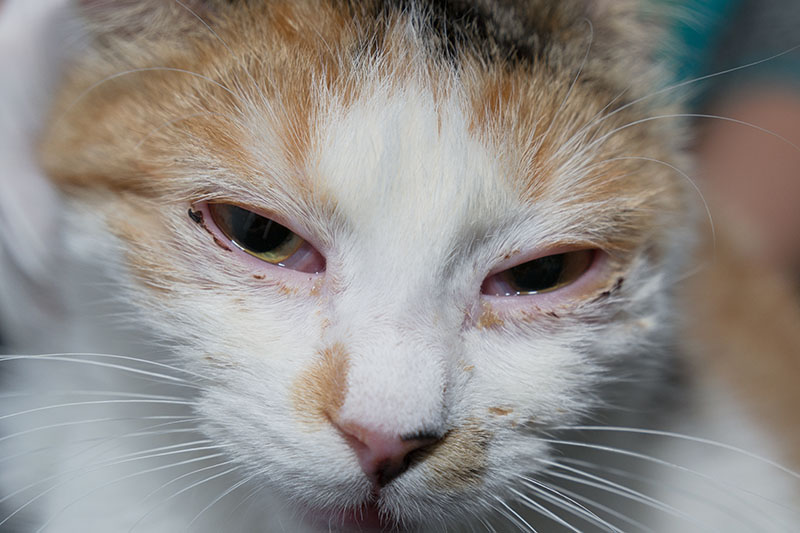
5. Glaucoma
Glaucoma occurs when the fluid inside the eye, the aqueous humor, doesn’t drain properly outside the eye, resulting in a pressure buildup. With high intraocular pressure, the optic nerve suffers and vision can be impaired, potentially leading to blindness. The condition is often secondary to uveitis, an inflammation of the inner tissues of the eye. Both uveitis and glaucoma can lead to a protruding third eyelid, usually just on one eye.
6. Horner’s Syndrome
The sympathetic nervous system is partially responsible for controlling the nictitating membrane. When neurological conditions like Horner’s syndrome affect your cat, you can see abnormal third eyelid protrusion in one eye, although it can happen in both eyes in rare cases.
Horner’s can occur secondary to tumors, neck or spine injuries, and ear infections, though over 40% of cases have an unknown cause, called idiopathic. Your vet will run the necessary tests to diagnose the underlying problem, and treatment will be directed to the specific problem if it can be found.

7. Haw’s Syndrome
Haw’s syndrome refers to painless bilateral third eyelid prolapse with no other signs of eye disease. It can be accompanied by diarrhea, and it tends to affect young cats more commonly. The cause is currently unknown, but some reports link it to parasitic infections, with others linked to Torovirus infection or neurological disease. If diarrhea is present, your vet will run some tests and give you treatment for the underlying gastrointestinal problem. Haw’s syndrome usually has a great prognosis, self-resolving in 1 to 2 months without treatment.
Final Thoughts
The cat’s third eyelid is just one of many unique aspects that make their stunning eyes stand out. While cats need the added safety outdoors, keeping their eyelids safe is crucial even in the comforts of home. Don’t worry if you see their third eyelid slip out, but don’t rest on it if you notice any irregularities. Understanding how many eyelids your cat has and what they do to protect your pet’s vision can play a significant role in how you manage your cat’s health.
Featured Image Credit: schankz, Shutterstock



